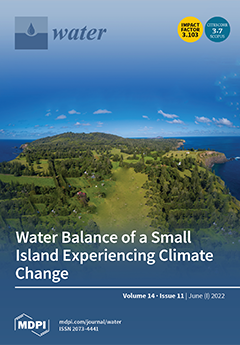Climate change, which has the potential to alter water flow and temperature in aquatic environments, can influence the freshwater fish habitat. This study used an ecological habitat suitability model (EHSM), which integrates hydraulic (water depth and velocity) and physiologic (water temperature) suitability, to
[...] Read more.
Climate change, which has the potential to alter water flow and temperature in aquatic environments, can influence the freshwater fish habitat. This study used an ecological habitat suitability model (EHSM), which integrates hydraulic (water depth and velocity) and physiologic (water temperature) suitability, to investigate the impact of climate change on two native freshwater fish species (
Zacco platypus and
Nipponocypris koreanus) in South Korea. The model predicted that in 2080 (2076–2085), the decrease in average ecological habitat suitability (EHS) will be higher for
N. koreanus (19.2%) than for
Z. platypus (9.87%) under the representative concentration pathway (RCP) 8.5 scenario. Under the same condition, EHS for
Z. platypus and
N. koreanus at 36.5% and 44.4% of 115 sites, respectively, were expected to degrade significantly (
p < 0.05). However, the habitat degradation for
Z. platypus and
N. koreanus was much lower (7.8% and 10.4%, respectively) under the RCP 4.5 scenario, suggesting a preventive measure for carbon dioxide emission. Partial correlation analysis indicated that the number of hot days (i.e., days on which the temperature exceeds the heat stress threshold) is the variable most significantly (
p < 0.05) related to EHS changes for both species. This study suggests that the EHSM incorporating the effect of water temperature on the growth and heat stress of fish can be a promising model for the assessment of climate change impacts on habitat suitability for freshwater fish.
Full article





